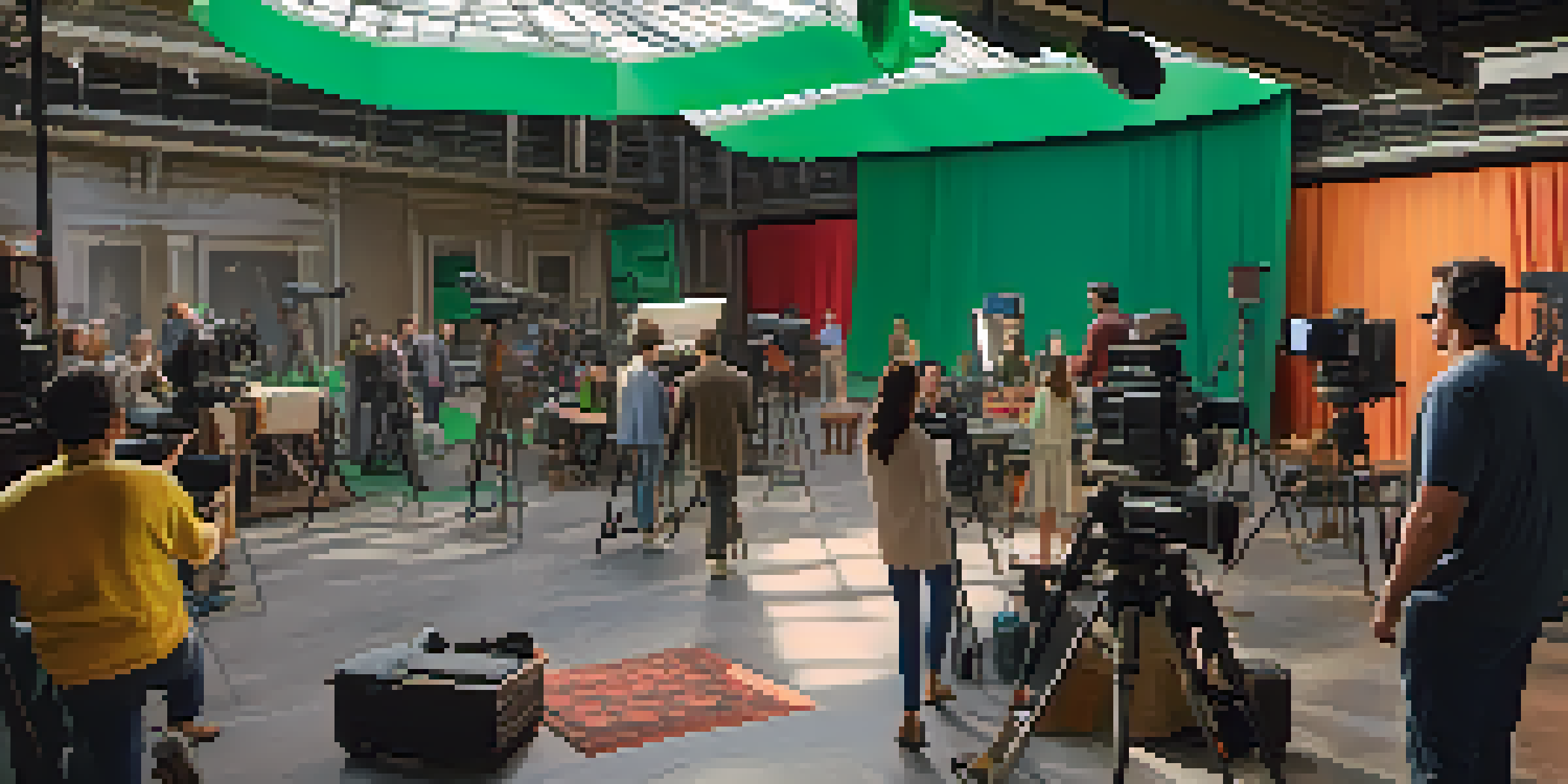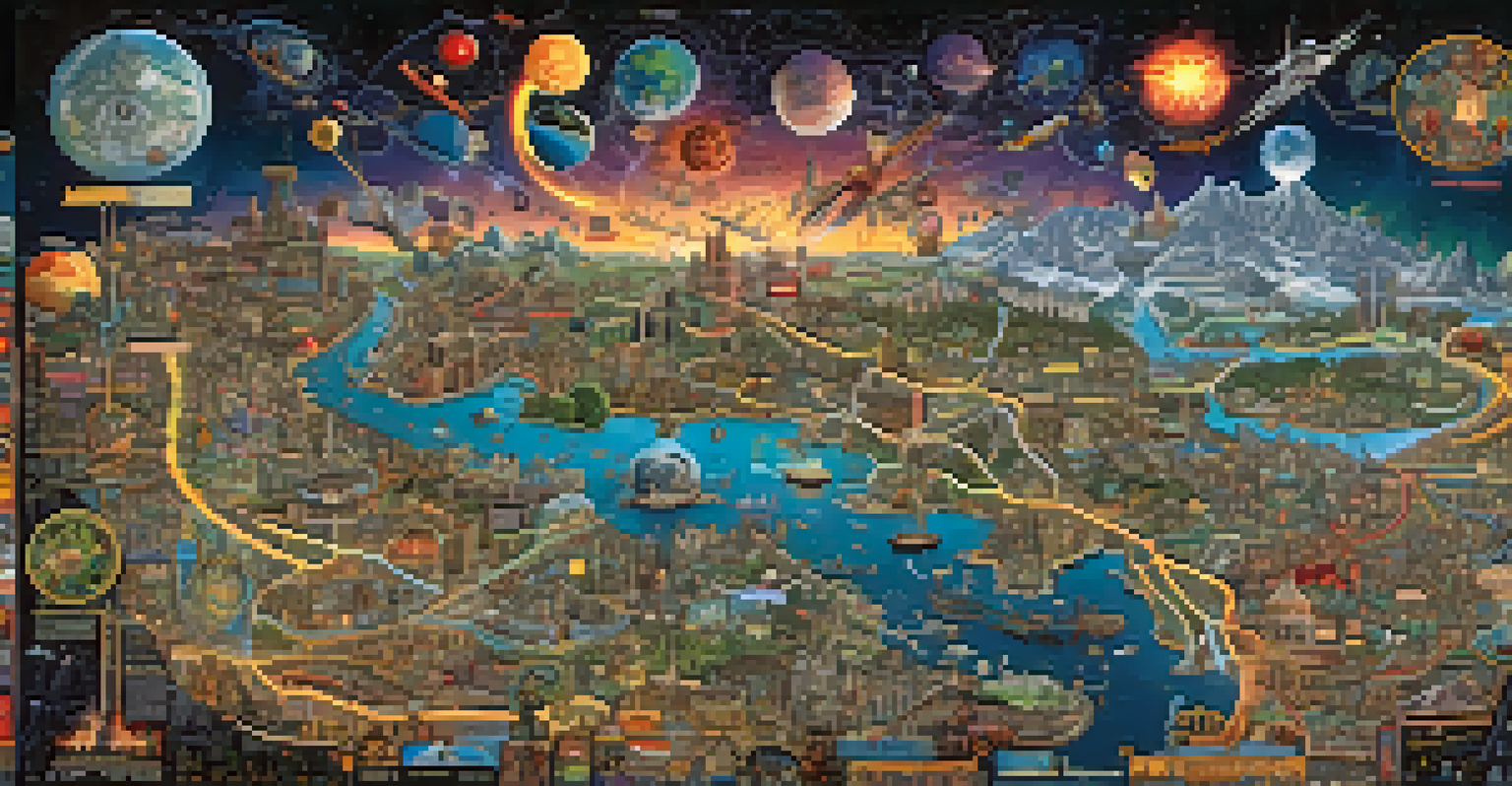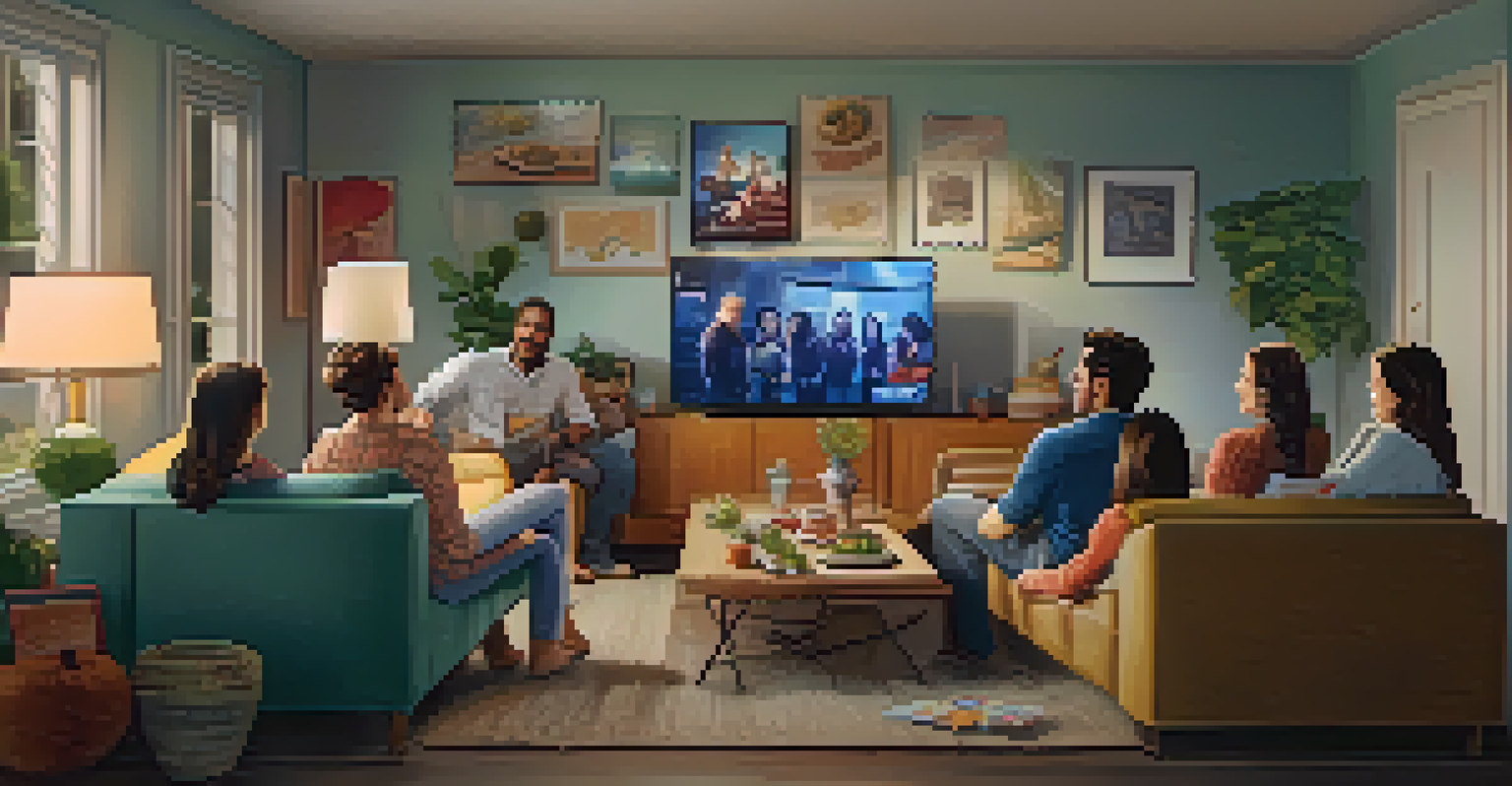The Rise of Cinematic Universes: A New Era in Film Storytelling

Defining Cinematic Universes: What Are They?
Cinematic universes are interconnected franchises that share characters, settings, and plots across multiple films. Think of the Marvel Cinematic Universe (MCU), where heroes like Iron Man and Captain America cross paths, creating a cohesive narrative. This approach allows filmmakers to build expansive worlds that engage audiences over multiple entries, making each film feel like part of a larger story.
Cinematic universes allow for a more intricate and engaging storytelling experience that can connect audiences in ways standalone films cannot.
These universes often include spin-offs, sequels, and even television series that further develop the storylines. For instance, the MCU has expanded into Disney+ series, which enrich the cinematic experience. This interconnected storytelling invites viewers to invest more deeply in characters and their journeys.
However, cinematic universes are not limited to superheroes; they can span genres, as seen in the Wizarding World of Harry Potter. This flexibility provides creators with the tools to explore various narratives while maintaining a core connection, making cinematic universes a versatile framework for storytelling.
The Appeal of Shared Universes for Audiences
Audiences are drawn to cinematic universes because they offer a sense of familiarity and continuity. When viewers invest in a character, they want to see their journey evolve over time. By connecting films, creators can develop characters more richly, allowing fans to form deeper emotional connections.

Moreover, these universes encourage fan engagement through theories and discussions. As new installments are released, audiences love speculating about potential crossovers or character arcs. This communal experience enhances the overall enjoyment, making the films more than just individual stories.
Cinematic Universes Foster Engagement
These interconnected franchises enhance audience investment through shared characters and ongoing narratives.
The anticipation for upcoming releases can also create a buzz that benefits the entire franchise. When fans know that their favorite characters will unite in future films, it builds excitement and loyalty, often resulting in higher box office returns.
Cinematic Universes: A New Business Model
For studios, cinematic universes represent a lucrative business strategy. By creating interconnected narratives, they can maximize audience interest and revenue potential. Franchises like the MCU and the Fast & Furious series have proven that a well-integrated universe can lead to multiple successful films, merchandise, and spin-offs.
The beauty of a cinematic universe is that it can breathe life into characters and stories, creating a rich tapestry of interconnected narratives.
This model not only boosts box office sales but also extends the lifecycle of a franchise. A successful film can lead to sequels and spin-offs, enhancing the brand's overall visibility. Additionally, studios can create a steady stream of content, keeping audiences engaged year after year.
However, this approach also comes with risks, as the pressure to maintain quality while expanding the universe can be daunting. If a single installment falters, it can affect the entire franchise's reputation. Striking a balance between quantity and quality is essential for long-term success.
Challenges in Creating a Cohesive Universe
Building a cinematic universe is no easy feat; it requires meticulous planning and coordination. Filmmakers must ensure that plot threads are consistent and characters remain true to their established personas. A single misstep can confuse audiences or disrupt the narrative flow, making cohesion a top priority.
Collaboration among different directors and writers is crucial, as each film must fit seamlessly into the larger tapestry. This can lead to creative differences, as individual visions may clash with the overall direction of the franchise. Navigating these dynamics is essential to maintain a unified storytelling experience.
A Profitable Business Strategy
Studios leverage cinematic universes to maximize revenue by creating sequels, spin-offs, and merchandise opportunities.
Moreover, fan expectations can be a double-edged sword. With so much anticipation surrounding cinematic universes, the pressure to deliver can be overwhelming. If a film doesn't meet these expectations, it can lead to backlash and diminish enthusiasm for future projects.
The Role of Technology in Cinematic Universes
Technology plays a significant role in the success of cinematic universes. Advanced CGI and visual effects allow filmmakers to create stunning worlds and characters that captivate audiences. This technological evolution has expanded the storytelling possibilities, enabling more complex narratives that were once thought impossible.
Additionally, digital platforms have changed how audiences consume content. Streaming services like Disney+ and Netflix allow viewers to explore a universe at their own pace. This accessibility can enhance engagement, as fans can catch up on essential storylines before watching a new release.
Social media also amplifies the conversation around cinematic universes, fostering a sense of community among fans. Online platforms provide spaces for discussions, theories, and fan art, further enriching the experience and promoting the universe beyond the films themselves.
Diverse Genres Within Cinematic Universes
Cinematic universes are not confined to a single genre; they can encompass a wide range of themes and styles. For instance, while the MCU primarily focuses on superheroes, it also incorporates elements of comedy, drama, and science fiction. This versatility allows for storytelling that appeals to diverse audiences.
The DC Extended Universe (DCEU) has also explored various tones, from the dark and gritty 'Zack Snyder's Justice League' to the more lighthearted 'Shazam!'. This genre-blending keeps the content fresh and engaging, allowing filmmakers to experiment with different storytelling techniques.
Diverse Genres Enhance Appeal
Cinematic universes can encompass various genres, allowing for diverse storytelling that attracts a wider audience.
As cinematic universes expand, they can also introduce new genres altogether. The success of horror universes like 'The Conjuring' series demonstrates how different genres can thrive within this framework. This adaptability is a key factor in the ongoing popularity of cinematic universes.
The Future of Cinematic Universes: What's Next?
As cinematic universes continue to evolve, the future looks promising. With new franchises emerging and existing ones expanding, there are endless possibilities for storytelling. Studios are exploring different narratives, characters, and even cross-genre collaborations, broadening the cinematic landscape.
The rise of international cinematic universes also signals a new era in global storytelling. For example, films like 'Parasite' have led to greater interest in Korean cinema, prompting collaborations that could pave the way for shared universes across cultural boundaries. This could lead to more diverse narratives and richer storytelling.

Ultimately, the key to the future of cinematic universes lies in innovation and creativity. As filmmakers push the boundaries of technology and narrative structure, audiences can expect fresh and exciting experiences that redefine how stories are told on the big screen.